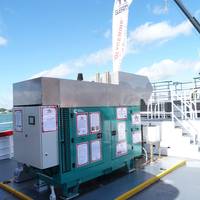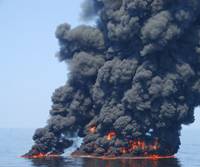Is Glycerine the Next Marine Fuel?

Following a year described as “intense activity,” the Glycerine Fuel for Marine Sustainability project (GLEAMS) concluded that Glycerine is a viable, exceptionally clean alternative marine fuel. The GLEAMS project claims that it has been particularly successful in dispelling the notion that glycerine is unsuitable for use as a fuel due to its physical and chemical properties, as it demonstrated that glycerine could be used as a fuel in compression ignition engines by displaying the glycerine powered GLEAMS emissions test engine at Seawork International 2014.
Kara-Winter-2014 Ice Expedition Successfully Completed
The Kara-Winter-2014 Ice Expedition organized by the Arctic Research and Design Center (a joint venture of Rosneft and ExxonMobil) with expert support from the Arctic and Antarctic Research Institute Federal State Budget Institution was successfully finished. It has become the largest expedition in the Arctic Ocean since the USSR collapse. Within 63 days scientists have been studying least developed areas of three northern seas: the Laptev, Kara, and East-Siberian Seas on board the Yamal Ice-Breaker. The works have been also carried out off the coast of Novaya Zemlya, Severnaya Zemlya archipelagoes, and De Long Islands. There have been carried out ice and meteorological measurements at 35 stations.
NOAA Releases Study on Deepwater Horizon Controlled Burns

During the 2010 BP/Deepwater Horizon Gulf oil spill, an estimated one of every 20 barrels of spilled oil was deliberately burned off to reduce the size of surface oil slicks and minimize impacts of oil on sensitive shoreline ecosystems and marine life. In response to the spill, NOAA quickly redirected its WP-3D research aircraft to survey the atmosphere above the spill site in June. During a flight through one of the black plumes, scientists used sophisticated instrumentation on board, including NOAA's single-particle soot photometer, to characterize individual black carbon particles.
Marine Oil Spills and Response Options
Marine oil spills are subject to natural processes, which alter oil's physical and chemical properties. These factors ? as well as the type of oil spilled, the magnitude of the spill, and the physical conditions of the spill site ? determine the appropriate response for spill cleanup. Response options include mechanical recovery, chemical treatment and in-situ burning. Every spill scenario is unique and constantly changing. Careful assessment by experienced personnel is required for effective response performance. Natural spreading of the oil spill is a major factor in determining the response option most likely to succeed. The number and availability of personnel and equipment is also a major consideration.





